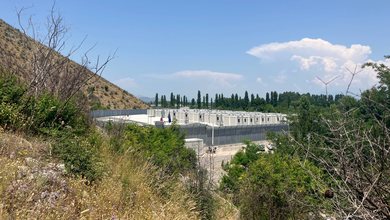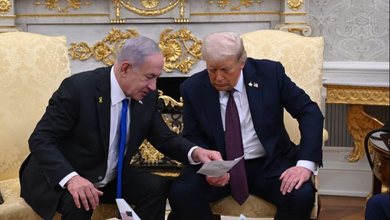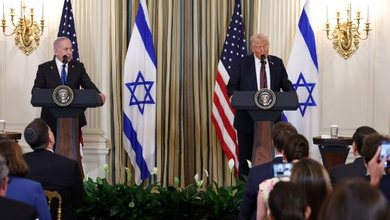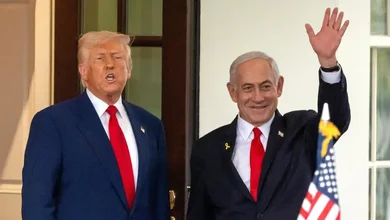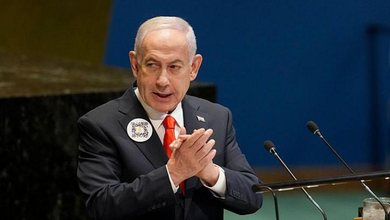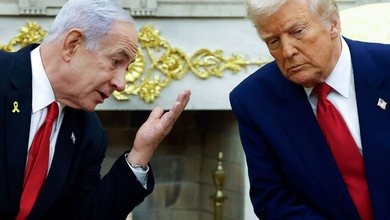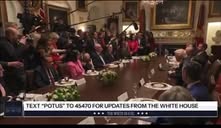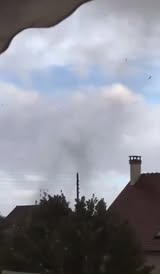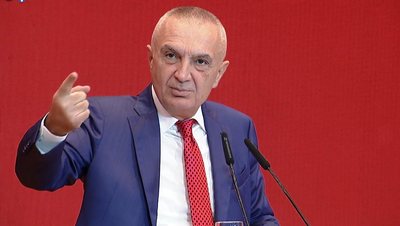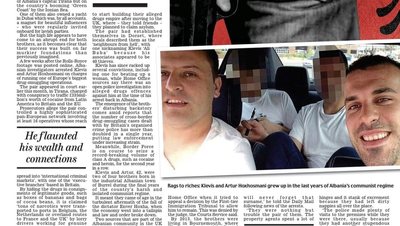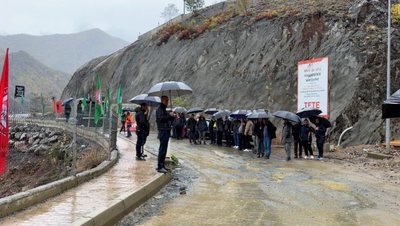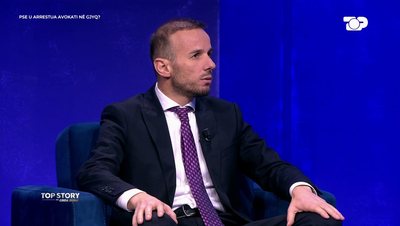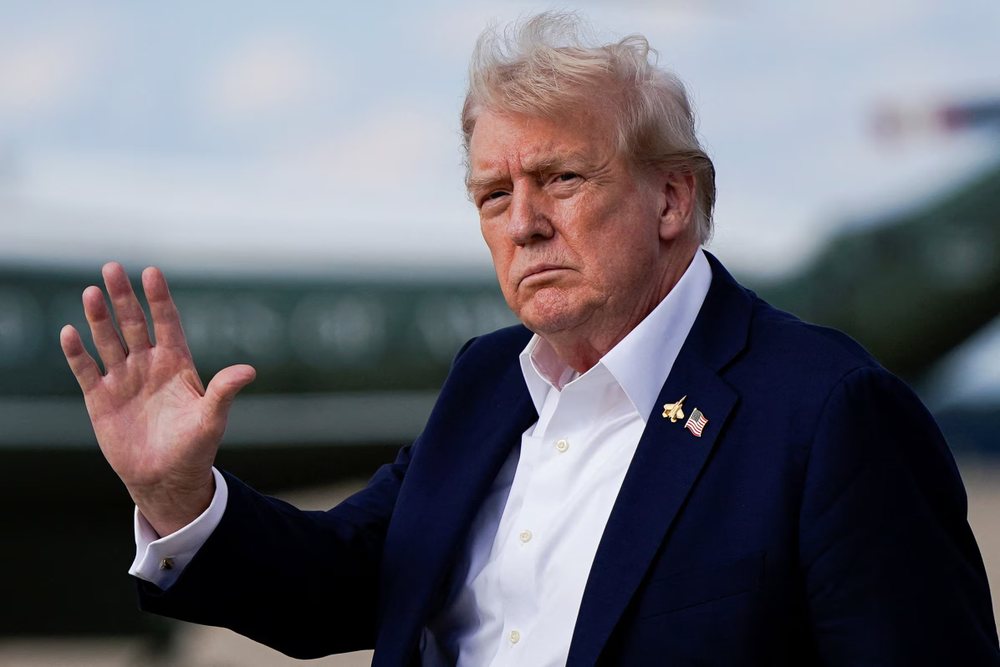
Tom Bateman, BBC State Department correspondent, from the White House.
US President Donald Trump said his plan to end the war in Gaza was potentially one of the greatest days in the history of civilization, and a day that could bring "eternal peace to the Middle East."
The hyperbole was characteristic. Still, his 20-point proposal, announced at the White House on Monday as Trump met with Israeli Prime Minister Benjamin Netanyahu, remains an important diplomatic step — even if it doesn’t quite live up to his exotic exaggeration.
The plan marks a shift in the Trump administration's stance on the future of Gaza after the war, and adds more pressure than Washington has exerted this year on Netanyahu to accept a deal.
Whether it can become a reality in the coming weeks will depend largely on the same issues that have always been fundamental: whether both Netanyahu and the Hamas leadership see it more beneficial to end the war than to continue it.
Hamas's response to the proposal is still unclear. A pessimistic assessment came from a Hamas figure who earlier told the BBC that the terms did not greatly protect Palestinian interests and that the group would not accept any plan that did not guarantee Israel's withdrawal from Gaza.
Netanyahu, standing next to the US president, said Israel accepted Trump’s 20 principles, even though a leader from the far-right wing of his coalition had rejected some of them. But accepting Trump’s principles is not the same as actually ending the war. And while Netanyahu rejects that charge, his domestic opponents say he has a history of undermining a new deal if it threatens his political survival at home.
In that sense, the proposal may not be enough to bring about the progress that Trump clearly wants. It still contains significant obstacles for the political constituencies of both Israel and Hamas that could ultimately prevent them from reaching an agreement.
There is also enough ambiguity in the plan that each side could appear to accept it, while further negotiations sabotage it, blaming the other side for its failure. This has been a pattern for months of negotiations. And if that happens, it is clear where the Trump administration will stand – on Israel’s side.
Trump made this clear to Netanyahu, telling him on Monday that if Hamas did not accept the proposal, then he would have "America's full support to do what he needs to do."
Although Trump presented this as an agreement, in reality it is a framework for further negotiations – or, as he called it at one point, a set of “principles.” This is a far cry from the kind of detailed plan that would be needed to end the war.
It is more similar to the “framework” that his predecessor Joe Biden announced in May 2024 to try to reach a phased ceasefire and an agreement to end the war. In that case, it took another eight months before Israel and Hamas implemented a ceasefire and exchange of hostages and prisoners.
Trump wants an “all-in-one” deal – but that requires considerable work to map out the Israeli withdrawal lines, specific details about the release of hostages, the identities of the Palestinian prisoners who would be released, and the precise terms for post-war governance, among many other issues.
None of these are detailed in his 20-point plan, and all have the potential to derail a peace agreement.
This framework borrows from previous proposals, including the Saudi-French plan of July, and the recent work of former British Prime Minister Sir Tony Blair, who would be part of a Trump-chaired “Peace Board” that would temporarily oversee the running of Gaza under this plan.
It was drafted by Trump's envoy, Steve Witkoff, and his son-in-law, Jared Kushner, after consultations with Israel, European and Arab countries, including mediators Qatar and Egypt. It calls for a cessation of fighting, a limited withdrawal of Israeli forces, and for Hamas to release all remaining hostages, followed by the release of hundreds of Palestinian prisoners held by Israel.
He then envisions the establishment of a local technocratic administration in Gaza to run day-to-day services, under the supervision of a "Peace Board" that would be headquartered in Egypt.
Remaining Hamas members who “commit to peaceful coexistence” and to decommission their weapons would be granted amnesty, while others would be deported. An international “stabilization” force created by the US and Arab countries would take over security in Gaza, ensuring the demilitarization of armed Palestinian factions.
Palestinian statehood is mentioned, but only in the vaguest terms. The plan suggests that if the Ramallah-based Palestinian Authority is reformed, the conditions “may finally be in place for a credible path to Palestinian self-determination and statehood.”
Arab countries see Trump's proposal as a significant breakthrough for them, in part because they rejected his February plan for Gaza - the "Riviera" plan that would have included the forced displacement of Palestinians.
They also have at least a mention of Palestinian statehood, even if there is no explicit commitment to it. And the US plan says that “Israel will not occupy or annex Gaza” – though without a similar pledge for the occupied West Bank. This is a vital clause for Arab countries, even if it is contradicted by another line in the plan that says Israel will continue to keep its forces in Gaza’s “security perimeter”.
On the Israeli side, Netanyahu says the entire framework is consistent with his objectives for ending the war: to see Hamas disarmed, Gaza demilitarized, and a Palestinian state never created.
But it is still unclear whether the clauses on disarmament and Palestinian statehood will be accepted by parts of his government, or whether he could use this pressure to add or "refine" the clauses.
Much now depends on Hamas’s response. As my colleague Rushdi Abu Alouf wrote earlier, this could be another “Yes, but” moment in which Hamas appears to accept the proposals while also demanding clarification. Thus, the same common danger looms for the White House as for the authors of previous “frameworks” and “principles” for ending the war.
In another important moment today, just before the joint announcement, Trump made Netanyahu apologize to Qatar. They had demanded an apology for the Israeli airstrike that targeted the Hamas leadership team in Doha earlier this month. This means that Qatar must now return as a mediator between Israel and Hamas.
In the hours before Trump and Netanyahu met, Israeli bombing and airstrikes intensified in Gaza City, where the IDF has deployed a third armored division. Israel's expanded offensive has been part of a self-proclaimed plan to put pressure on Hamas, but has brought further devastation to civilians.
Much of the rest of the world has condemned Israel's actions. Meanwhile, Hamas's top commander in Gaza, Ez al-Din al-Haddad, is preparing for what a Hamas field commander described to the BBC as a "final decisive battle" with some 5,000 fighters.
European and Arab countries, led by France and Saudi Arabia, had spent the summer trying to revive the diplomatic track, appalled by Israel's behavior on the ground. This only added to Israel's sense of international isolation, with Netanyahu still under an international arrest warrant from the International Criminal Court (ICC) for alleged war crimes in Gaza.
The Europeans saw the conflict spiraling out of control with the extremes of both sides empowered, and believed they could appeal to the remaining moderates for a two-state solution—the future they wanted for Israelis and Palestinians long-term. And while that is not explicitly stated in the plan, they saw Trump’s inclusion of a moderate proposal on Gaza as crucial.
The U.S. framework is supposed to bring momentum back to the negotiations. But it will probably still require weeks or more of fine-tuning to develop into something approaching what Trump says he can offer: a complete end to the war.
⸻


